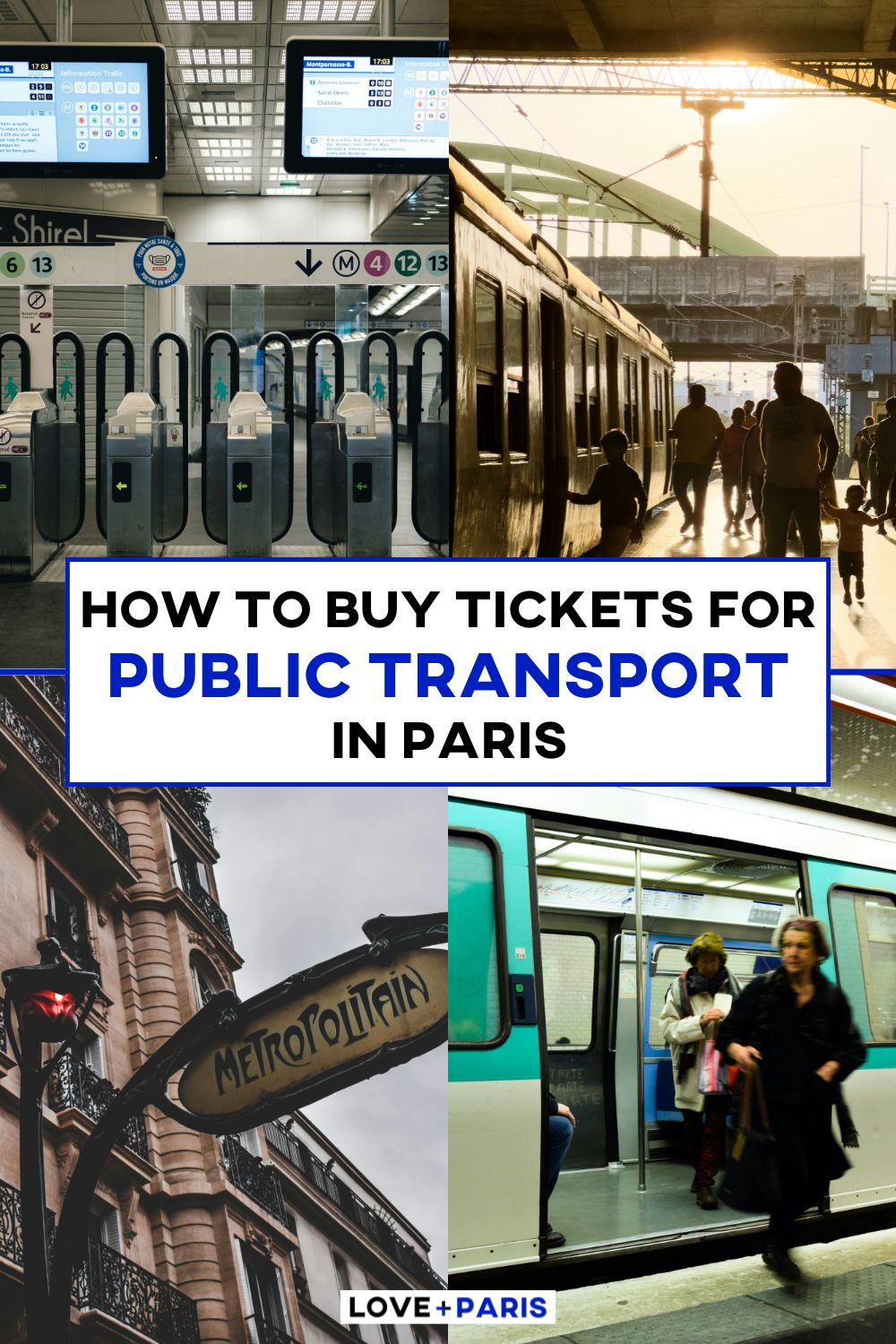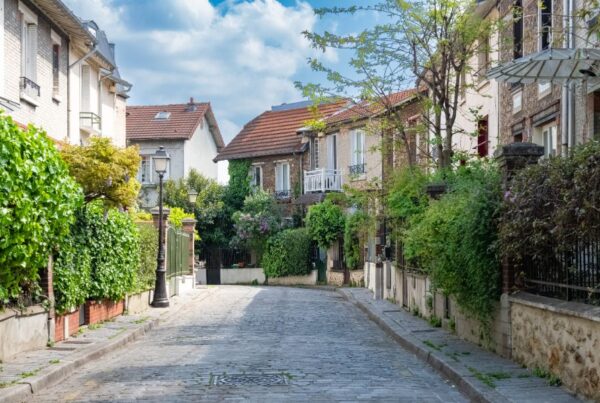Paris’s transport system is one of the best in the world, however, it can be a little confusing, especially for first-time users. Before even knowing how to use it, you need to start with getting a ticket. This guide covers everything you need to know about how to pay for public transport in Paris.
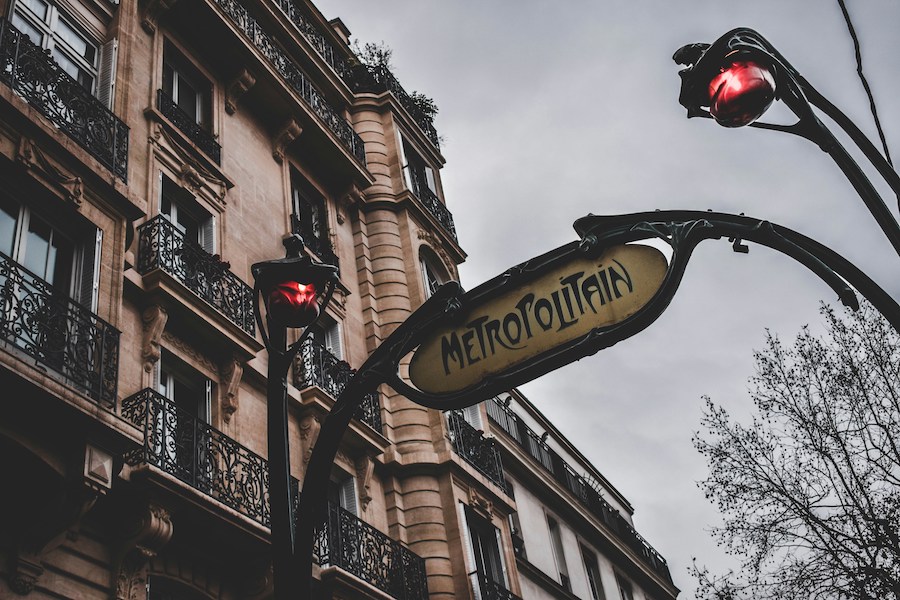
What types of public transport are there in Paris?
It’s useful to know which different forms of public transport there are in Paris, because this could be a determining factor in which type of ticket you need. These are managed by IDF Mobilités, the greater metropolitan Paris transport authority, but have different names.
Paris has an underground system, made up of:
- Le métro (14 numbered lines)
- The RER (suburban train system with five lettered lines that travel underground into Paris)
- Les Bus (public buses from mini to extra large)
- Le tramway (modern streetcars)
What ticket do I need to travel on public transport in Paris?
You need a ticket to travel on any of these modes of transportation, available as a single ticket, virtual tickets on a rechargeable card, or via your phone. We’ll go into detail about each of these below.
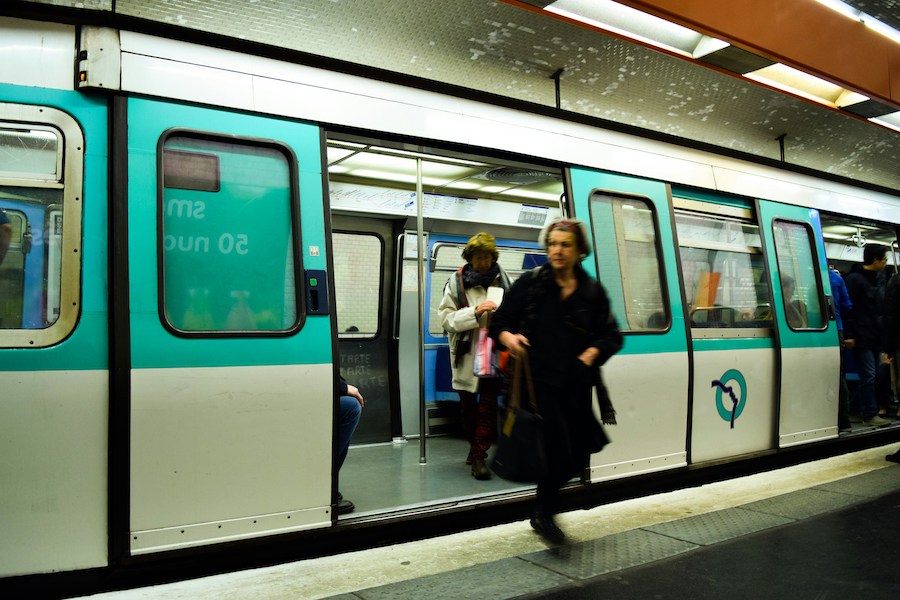
How much does transportation cost in Paris?
You might be wondering what is the cheapest way to get around Paris, well, that would be on foot as Paris is a great walking city. Nevertheless, you’ll likely need to take public transit at least a few times during your stay. Unlike some other cities, like London, there isn’t a price difference between each mode of transportation, unless you’re buying a ticket directly on the bus (see below).
At the time of publication (spring 2024), a single ticket in Paris costs €2.15, and ten tickets on a rechargeable Navigo Easy card is €17.35 (so €1.73 per ticket, more information on these in the next section). If you buy a single ticket directly from a bus driver, it costs a little more at €2.50.
This is the price for a ticket from within a transit “zone” or from one zone to its neighboring zone. The métro, buses, and trams fall within this category so you never have to worry about getting a special ticket for these forms of transport. If you take the RER outside of Paris (like to the airport or Versailles), you’ll need a more expensive ticket that is valid from within Paris to that destination (i.e. you don’t need a Paris transit ticket AND a second ticket to leave the city). These tickets are available for purchase the same way as other tickets which we outline below.
In some circumstances, it could be more economical to get an unlimited pass (Navigo day or week-long passes or a Paris Visite multi-day tourist pass). We don’t generally recommend this if you’re staying in central Paris (arrondissements 1-10), because you’ll be walking a lot and they probably won’t be worth the cost. However, if you’re staying in districts 11 to 20 and plan to use the metro more than 5 times a day, and to and from the airport, these passes can be worth getting.
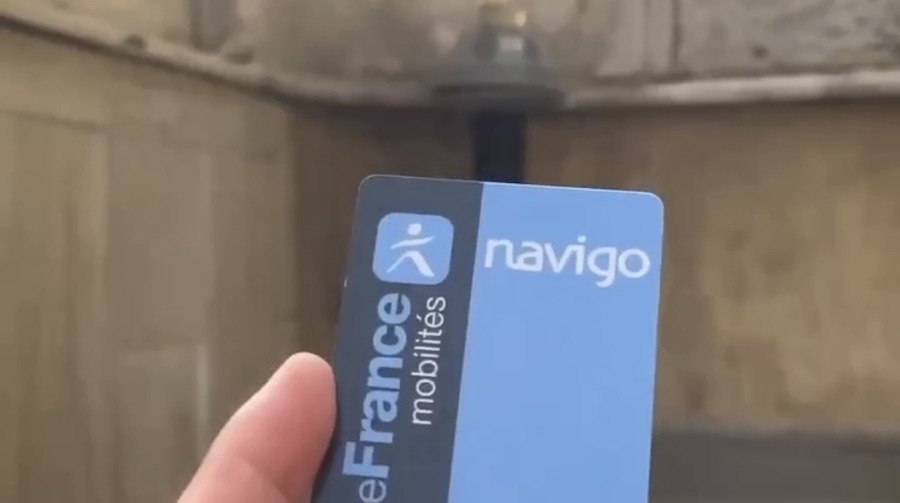
Which form do tickets come in?
IDF Mobilités is phasing out paper tickets. However, they are still available and might stay available for buses. Instead, the system is moving over to reusable and rechargeable plastic cards and virtual tickets on smartphones and Apple watches.
A Navigo Easy card is a plastic card (the size of a credit card) that you can load single tickets and packs of ten/twenty tickets onto (below are more details on how to do this). The Navigo Easy card costs a one-time fee of €2 and is available from a ticket counter agent within stations and new ticket vending machines. Each card is valid only for one individual, so if you’re two travelers or more, you each need a card. They pay for themselves if you plan to use public transport at least 9 times.
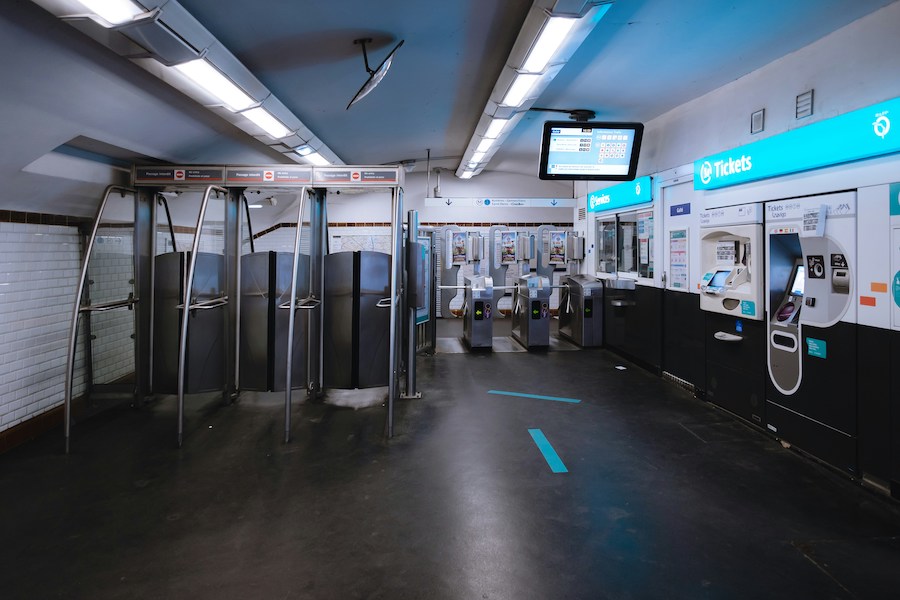
How do you purchase a ticket or load a Navigo Easy card?
The first step in how to pay for public transport in Paris is, of course, getting your ticket. There are various ways you can purchase a ticket, depending on which means of transportation you are using.
At station vending machines or from ticket counters
Every métro/RER station has automatic ticket vending machines, some have a ticket counter with a transit employee who sells tickets or loading tickets onto a Navigo Easy card. Note that some stations have numerous entrances and the “back” entrances sometimes don’t have a machine, there are grey signs (in English), above the door of these entrances which let you know if this is the case. If you go down one of these and need to purchase a ticket, just go back up to the street level and find the main entrance, which is usually indicated on the grey sign and is a block away.
If you’re using an automatic ticket machine, we have good news for you. It’s possible to change the language of the machines to English (and a few other languages). A word of caution, the purple machines are only for Navigo rechargeable cards, so if you’re sticking with paper tickets, skip those. All machines take credit cards and coins, but only some accept bills, so if you’d like to pay with bills, look out for machines with a bill “slot” usually found on the right side of the main screen.
Once you’ve got the right machine, to purchase a regular single-use ticket (for within Paris and not the suburbs), select “Ticket t+”, choose the quantity you’d like to buy, then follow the instructions to pay. If you’d like a pack of 10 tickets, you simply scroll down to select 10 tickets (and the price goes down to the amount listed above).
You can also purchase RER tickets (like to the airport or to Versailles) from machines. As this is a time of transition away from paper tickets, some machines may or may not allow you to add these non-Paris destinations to your Navigo Easy card.
If you would like to recharge your Navigo Easy at a ticket vending machine, place it onto the designated section, a flat card area, and proceed with adding single or multiple tickets are outlined above. Leave your card on the machine until your purchase is complete and the message on the screen tells you your card has been topped up.
On the bus from the driver
If you’d like to know how to pay for the bus in Paris, you can actually buy tickets directly from the driver. You have to pay in cash and they appreciate smaller bills. As we mentioned above, the cost is a touch more at €2.50, so since you can use tickets bought at a métro station on the bus (or on your Navigo Easy card), buy from the driver as a last resort.
On your phone
It’s now possible to purchase virtual tickets on the IDF Mobilités app, available in the Google Play Store and Apple Apps Store. You can purchase tickets for a rechargeable Navigo Easy card that you already have or completely virtual tickets that you then validate by passing your smartphones or Apple watch over the reader at ticket readers on turnstiles in métro stations or on buses/trams. On the app, go to the “purchase” section (on the bottom of the screen) then select the option “on my phone,” it’s all in English and explained in easy-to-follow steps, however, you must have both the latest update for your phone’s operating system and the IDF Mobilités app to be able to use the tickets through your phone option.
You have to send an SMS with the word “bus” + the number of the line to the short phone number “93100”. For example, if you’re taking bus #29, type Bus29 (no space between bus and the number) and send it to 93100. You’ll then receive an SMS reply with a receipt of your ticket purchase. Then when you board the bus, show the SMS to the driver.
At machines at Tramway stops
You will likely not take the tramway while you’re in Paris, as it runs along the edge of the city. However, if you’re staying near the tramway, it can be a useful way to get to métro stations. There are automatic ticket vending machines at tramway stops where you can buy a ticket with a credit card.

If I buy my ticket in person do I need exact change?
No! This is another bonus of the Paris transit system. If you purchase from an automatic ticket vending machine, ticket counter, or bus driver, you’ll always receive change. Bus drivers appreciate smaller bills and might not be able to handle a purchase with a bill larger than €20. As mentioned above, not all métro ticket vending machines accept bills.
Do kids have to pay to use public transport in Paris?
It depends on how old they are. If a child is between 4 and 9 years old, they’re eligible for a reduced-price ticket of 50% of the cost of a regular ticket. Children aged 3 and under are free. See our detailed article on the topic for full details.
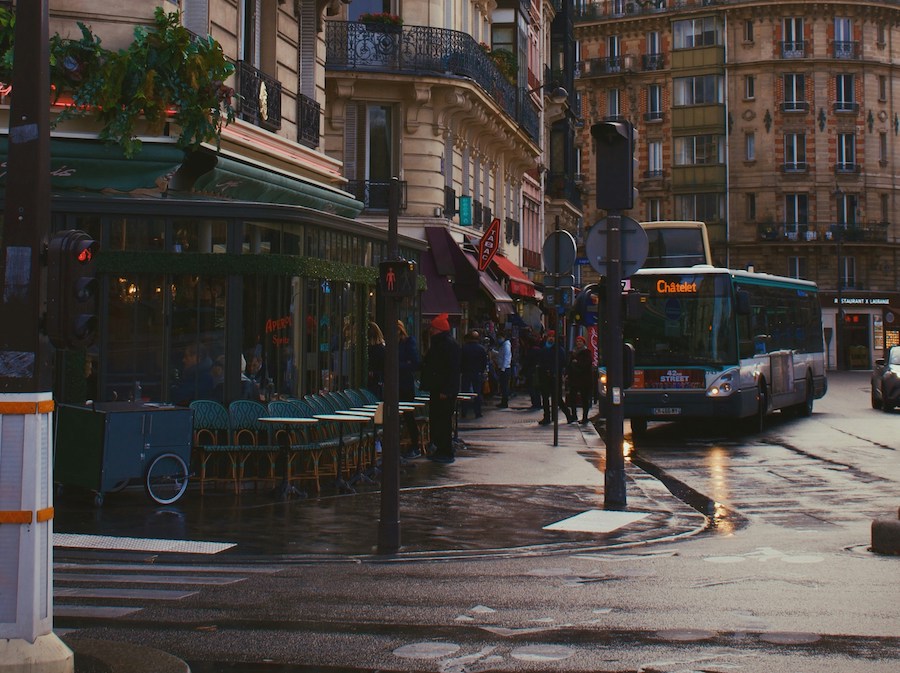
Can I use the same ticket for any of the different means of transport?
Yes, you can use a ticket bought in the métro on a bus/tram and tickets on the Navigo Easy are valid for any form of transportation.
However, your single ticket is good for only some transfers between different modes of transportation. You can use one ticket to transfer between two different métro lines, the métro to the RER (within Paris), one bus/tram to another bus/tram. Think of it as the division of above-ground and underground transit.
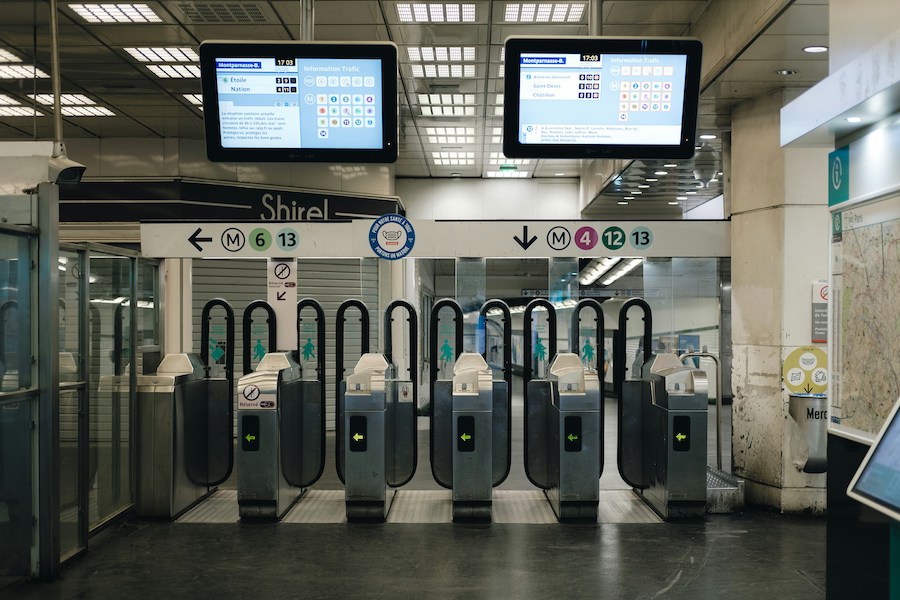
How do I validate my ticket?
Now that we’ve gone over how to pay for public transport in Paris, you also need to know how to use your ticket! No matter which mode of transportation you use, you need to validate your ticket.
On the métro there are turnstiles, you need to either tap your Navigo Easy card on the validation area found on top of the turnstile or put your ticket through the slot on the front of the turnstile, it’ll then come up on the top of the turnstile, you need to take it out and then you can walk through the turnstile.
For buses and trams, there are tapping validation machines just inside the doors, and ticket stamping validation machines usually just after the bus driver.
Whatever means of transport you use, make sure you keep your ticket until you leave the station. If you’re caught by a ticket controller without one, you could face a hefty fine of €50!
If you found our article on how to pay for public transport in Paris helpful, you might want to read these articles next:
Pin this…
